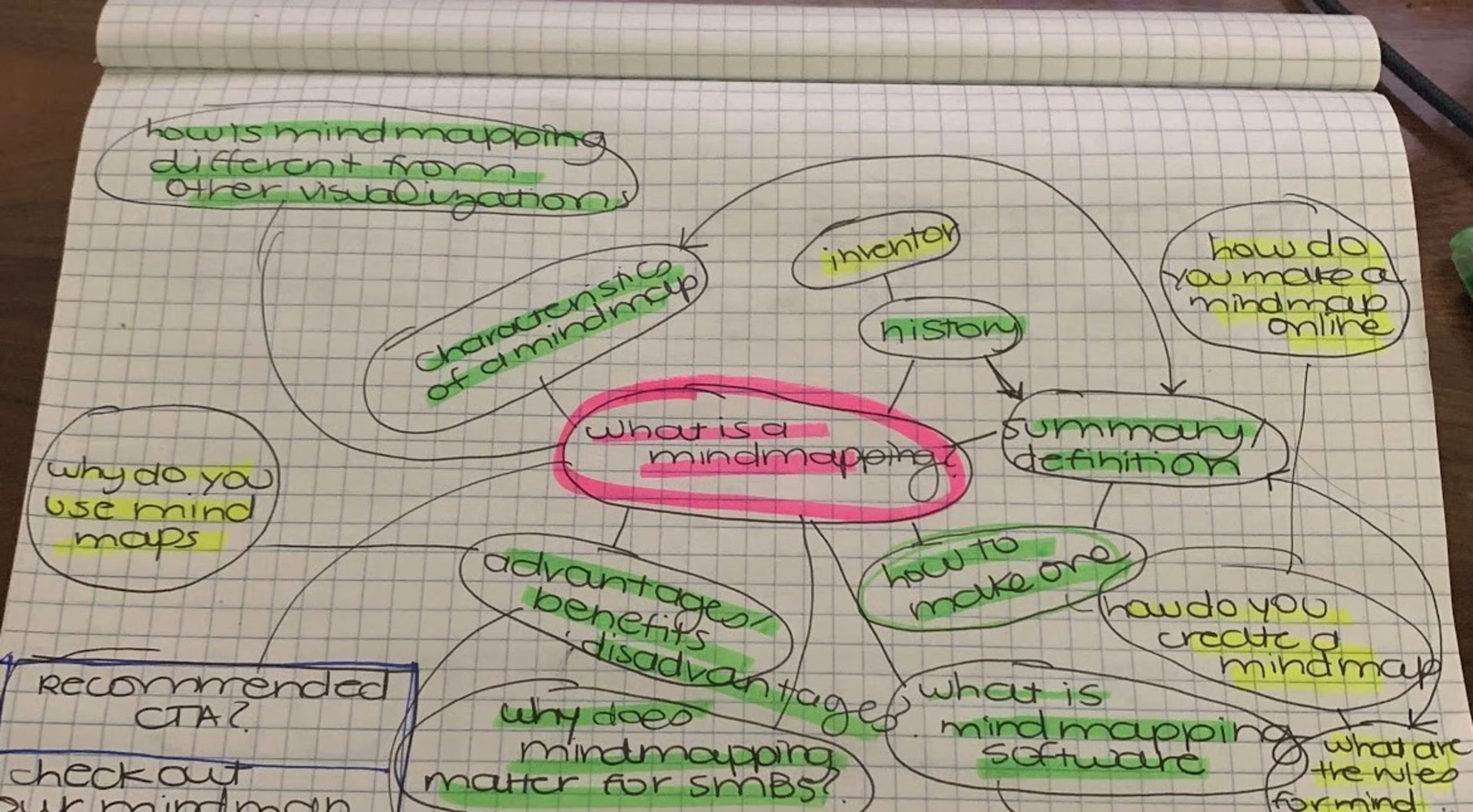Mind mapping can give your small business a competitive edge when making a business pivot or creating new revenue streams.

Mind mapping may just be the brainstorming technique your company needs to jumpstart creative solutions mid-pandemic—to pivot your business model, better serve contactless customer experiences, or come up with new revenue streams to keep your business thriving in the increasingly digital economy.
Furthermore, many business owners could likely benefit from a creativity boost. When asked about their experience shifting their businesses during the pandemic, 74% of business owners said converting in-person to virtual services was challenging. And 75% also find cross-team collaboration to be a pain point, according to a July 2020 Capterra survey.
That’s where mind mapping, a brainstorming tool, can be helpful. Mind mapping can help teams unleash their creativity. And, when these teams use collaborative mind mapping software to create these diagrams, they can also do all this remotely. In this article, we’ll share more about what mind mapping is, how it works for small business owners, and how software can help.
What is a mind map?
A mind map is a brainstorming tool that helps you visualize relationships between ideas. It uses nodes for main ideas, with lines branching off those nodes showing associated ideas.
Mind maps were popularized by Tony Buzan in the 1970s, who also shared the following rules for mind mapping:
Use one central idea, such as an image, topic, or word
Put one main idea on each branch
Put sub-topics on their own sub-branches
Use emphasis and show associations
Use three or more colors
Use one key word or image per line
Print all words clearly using uppercase or lowercase letters
Leave space for unexpected topics or new thoughts
Let your mind wander
Develop your own personal style for mind mapping
How do you create a mind map?
Following the mind-mapping rules in the previous section, you can easily create a mind map using a pen and paper or white board, or software. In fact, in drafting this article, I got a bit meta and created a mind map for my mind-map article (yes, you read that correctly) using both a pen and paper and software.

An example of a mind map
It was easy for me to grab my notebook and a pen to jot something down. However, I quickly noticed the advantage software has over pen and paper when I tried to recreate my mind map online using a mind-mapping tool.
Mind mapping software allows you to easily move things around and correct mistakes. And with software, it’s easy to share digital mind maps with colleagues by simply sharing a link. Many software programs come with a mind-map template that easily allows you to create connections and nodes without having to start designing from scratch.
What are the benefits of mind mapping for small businesses?
Mind maps are a great tool for small businesses—they’re an excellent brainstorming technique to keep in your toolbox for when you feel stuck or need help coming up with new, creative solutions.
Mind maps:
Work well for small teams. Brainstorming groups should be small—no more people than you could feed with a pizza, according to Fast Company. Because you already work on smaller teams at a small business, a mind map can be the perfect tool to use at your next brainstorm.
Make a great competitor research tool. Small businesses can often face intense competition, and mind maps can help you visualize who your competitors are and what unique selling points they offer that you may consider adding to your product or service mix.
Can define role clarity. At a small business, your employees wear many hats. By using a mind map, you can work with employees to more clearly define and delineate their roles to prioritize and focus on what truly provides value for your business.
Help with memory and learning, which improves planning or future-proofing processes. Smart, innovative, problem-solving employees are essential at small businesses, where employees often take on multiple roles or work on small teams with many responsibilities. Because it’s visual, a mind map can improve memory when people use it as a tool to explore ideas. This can be especially beneficial if you apply a mind map when you’re doing a postmortem after a project. Ensuring your employees can learn from past mistakes and apply insights to future problems can help your business better serve customers or clients.
Enable novel and unique solutions, which can help pivot your business. Small businesses can be especially susceptible to larger economic fluctuations—as we’ve seen in the case of the pandemic—so being able to pivot quickly is important. With a mind map, you can use images, icons, or other visuals to stimulate new thoughts and ideas that you may not come to with just text-based brainstorming.
Other visualization tools
How is mind mapping different than other visualization techniques?
Concept map: This technique allows for more complexity than mind mapping, as concept mapping shows the relationship of the components of a specific concept (such as the science behind cooking food) rather than allowing for the free association of ideas (such as new recipes for cooking eggs).
Spider diagram: A mind map is a type of spider diagram, which is a diagram that has a main idea with several sub-branches coming off of it, resembling the legs of a spider.
In a time of uncertainty, don’t underestimate the power of creative thinking
Mind mapping can be such a powerful tool for unleashing creativity and unlocking new patterns between ideas. It’s an undervalued avenue for creating value for your business, especially as businesses need creative solutions for how to create contactless experiences for customers in this mid-pandemic world. We’ve seen that businesses that are able to flex and pivot are more likely to survive and thrive in this uncertainty, especially those who are upping their tech and digital game, like this example of a movie theater owner we interviewed.
Mind mapping software is crucial, as the number of people working remotely is expected to double in 2021. While writing on a whiteboard or notebook may have cut it in 2019, we’re increasingly going to have to adapt to a more digital environment. Mind mapping software enables you to quickly share ideas with colleagues. On top of that, mind mapping software can even be more helpful than hand diagramming, because you can easily (and literally) move ideas around or edit rather than crossing out.
Ready to see your software options?
Check out Capterra’s mind mapping software directory to compare tools to help kickstart your company’s brainstorming efforts.
